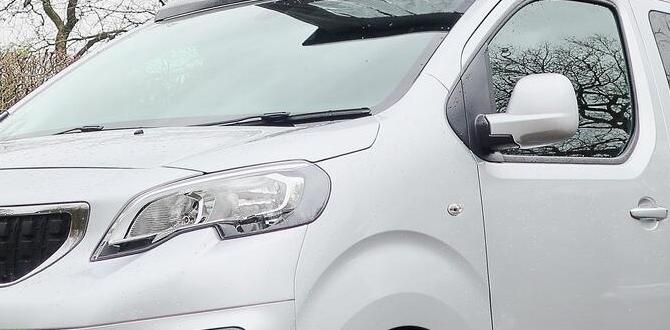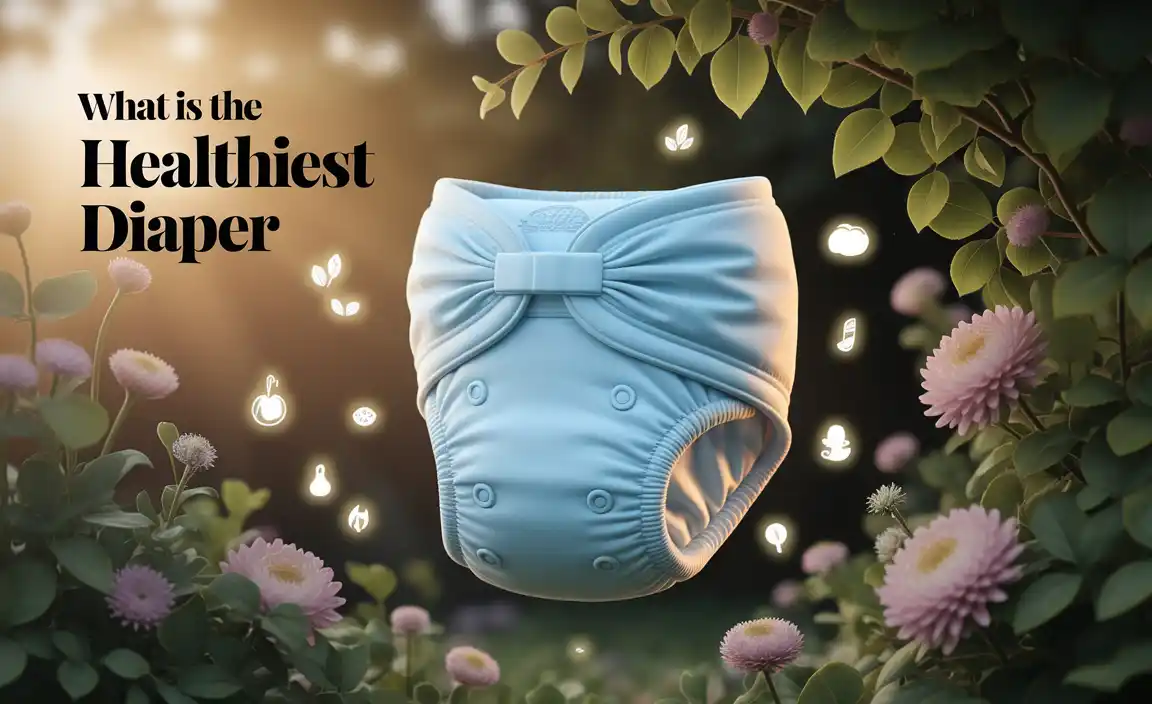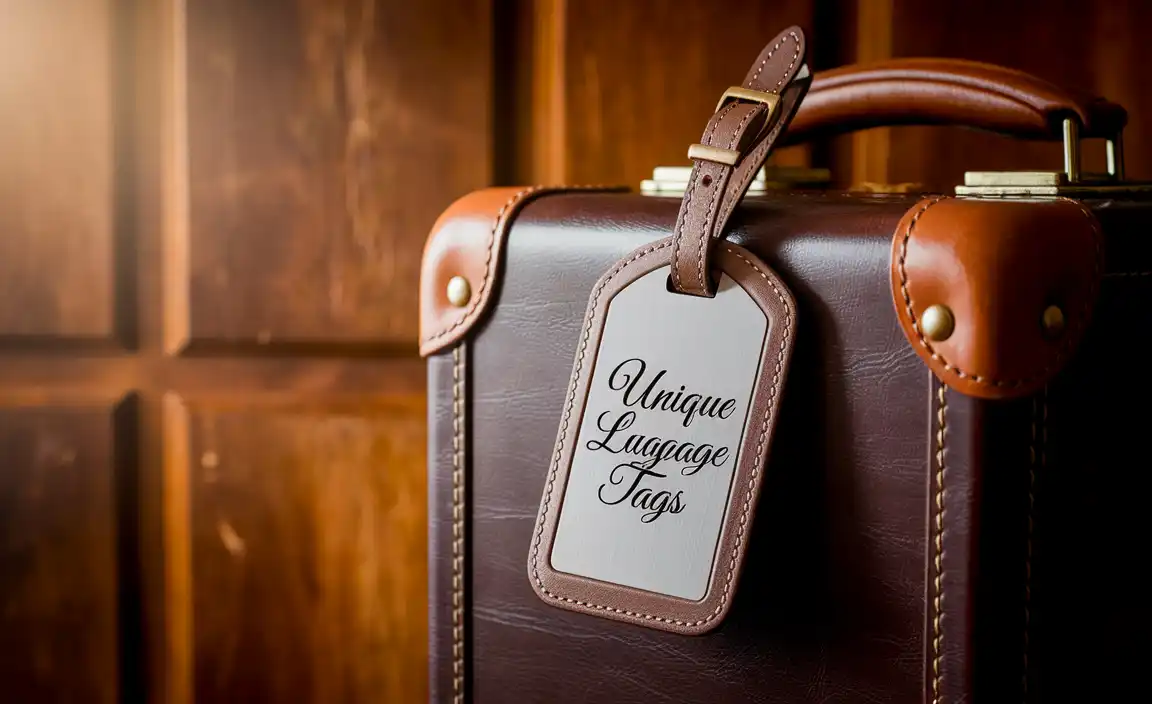Quick Summary: For heavy incontinence, adult diapers are proven essentials, offering superior absorbency, leak protection, and discretion for comfort and confidence. Choosing the right type ensures you can live life fully, without worry.
Traveling should be an adventure, not a source of stress related to personal care needs. If you or a loved one manages heavy incontinence, finding the right protection is key to enjoying every journey stress-free. Dealing with leaks and discomfort can make even short trips feel overwhelming. But don’t worry, there are fantastic solutions available! This guide will walk you through choosing and using adult diapers specifically designed for heavy incontinence, ensuring your travels are as comfortable and secure as they should be. We’ll cover everything from understanding absorbency levels to packing tips, so you can focus on the destination, not the details.
Understanding Heavy Incontinence and Diaper Needs
Heavy incontinence means experiencing frequent or large amounts of urine or stool leakage. This can significantly impact daily life, affecting mobility, social activities, and overall well-being. For travelers, managing this condition requires reliable, high-performance products that offer significant absorbency and leak protection, even during long journeys or periods away from immediate access to restrooms. Traditional incontinence products might not suffice, necessitating a focus on specialized options.
The primary goal when selecting adult diapers for heavy incontinence is to achieve a balance between maximum absorbency, skin protection, odor control, and discretion. It’s about finding a product that allows for freedom of movement and peace of mind, so you can engage in travel without constant worry about leaks or skin irritation.
Key Features to Look for in Adult Diapers for Heavy Incontinence
When you’re dealing with heavy incontinence, not all adult diapers are created equal. You need products that are specifically engineered for maximum protection and comfort. Here’s what to prioritize:
Superior Absorbency & Core Technology
This is the most crucial factor. Look for diapers with multi-layered absorbent cores that can quickly wick away and lock in large volumes of liquid. Features to note include:
- High Absorbency Capacity: Brands often rate their products on an absorbency scale. For heavy needs, aim for the highest ratings, often labeled as “maximum,” “overnight,” or “heavy duty.”
- Fast-Acting Wicking: The material should pull moisture away from the skin quickly to prevent wetness and skin breakdown.
- Gel Technology: Many modern diapers use superabsorbent polymers (SAPs) that turn liquid into a gel, locking it away to prevent leaks and odor.
- Extended Wear Capabilities: Some diapers are designed for overnight use or longer periods, indicating their robust ability to handle significant leaks.
Leak Guards & Leg Cuffs
Preventing leaks around the legs is vital. Effective leak guards provide an extra barrier:
- Inner Leg Cuffs: These are elasticated barriers that create a snug seal around the thighs, catching any potential leaks. Ensure they are soft but firm enough to create a good barrier without causing chafing.
- High Waistbands: For some, a higher-fitting diaper can offer added security against leaks, especially when sitting or reclining.
Odor Control
Discretion is often a major concern. Good adult diapers for heavy incontinence will have effective odor control systems:
- Odor Neutralizers: These chemicals work to neutralize the ammonia in urine, preventing or reducing unpleasant smells.
- Breathable Materials: While focusing on leak protection, choose products that still allow some air circulation to help manage odor and skin health.
Skin Protection & Breathability
Wearing absorbent products for extended periods can increase the risk of skin irritation and breakdown. Look for:
- Hypoallergenic Materials: These are less likely to cause allergic reactions.
- Breathable Outer Shells: These allow some air to pass through, keeping the skin drier and reducing the risk of moisture-related issues like diaper rash or fungal infections. Many modern products use a cloth-like feel that offers breathability and a more natural sensation.
- pH-Balanced Materials: Some products are designed to maintain the skin’s natural pH, which is important for skin health.
Fit and Comfort
A well-fitting diaper is more effective and comfortable. Consider the different styles available:
- Tab-Style Briefs: These are the traditional, all-in-one adult diapers with refastenable tapes. They offer a highly customizable fit and excellent containment, making them ideal for heavy incontinence and for individuals with mobility issues or caregivers assisting with changes.
- Pull-Up Style Underwear: While often perceived as more discreet, some pull-up styles are designed with higher absorbency for moderate to heavy incontinence . They offer more independence for those who can manage their changes and prefer a more underwear-like feel.
Comparing Types of Adult Diapers for Heavy Incontinence
To make an informed choice, it’s helpful to understand the specific types of adult diapers best suited for heavy incontinence. Each has its advantages, and the best choice often depends on individual needs, mobility, and personal preference.
| Diaper Type | Best For | Pros | Cons | Key Features for Heavy Incontinence |
|---|---|---|---|---|
| Tab-Style Briefs | Maximum absorbency needs, overnight use, immobility, caregiver assistance. | Highest absorbency potential, secure fit, easy for caregivers to change, adjustable tapes for a custom fit. | Can be bulkier, may require assistance for changing, tapes can sometimes break away if not applied correctly. | Containment: Often feature a plastic or cloth-like outer shell for maximum leak protection. Absorbency: Core designs are made for high capacity. Fit: Adjustable tapes offer precise snugness. |
| Heavy-Duty Pull-Up Underwear | Active individuals with heavy incontinence, desire for discretion and independence. | Discreet, underwear-like feel, easy to pull on and off independently, good for mobility. | May not offer the absolute highest level of absorbency as some tab-style briefs, can be harder to change if soiled heavily without undressing completely. | Absorbency: Thicker cores and advanced wicking materials designed for higher capacity. Leak Protection: Stronger leg elastic and secure waistbands. Discreetness: Designed to look and feel more like regular underwear. |
| Booster Pads (Add-in Pads) | Enhancing absorbency of other products, especially overnight or during long journeys. | Adds extra absorbency without needing a totally new diaper, cost-effective way to boost protection, can be used with various types of underwear or briefs. | Can add bulk, may shift if not secured properly, doesn’t offer its own leak protection, just adds capacity. | Absorption: Designed to draw liquid through to the primary diaper, increasing overall capacity. Placement: Intended to be placed inside another absorbent product. |
Choosing the Right Size and Fit
Getting the size right is paramount. An ill-fitting diaper, whether too loose or too tight, can lead to leaks and discomfort. Here’s how to find your perfect fit:
Measuring Your Waist and Hips
Consult the manufacturer’s sizing chart for the specific brand you are considering. Typically, you’ll need to measure:
- Waist: Measure around your natural waistline.
- Hips: Measure around the fullest part of your hips and buttocks.
Use the larger of these two measurements and compare it to the brand’s chart. If you are between sizes, it’s often recommended to size up for heavy incontinence to ensure adequate coverage and room for absorbency.
Understanding Fit Nuances
Once you have a diaper, pay attention to how it feels:
- Leg Gaps: Ensure the elastic leg cuffs (leg guards) lie flat against your skin without significant gaps. You should be able to slide a finger comfortably under the leg cuff, but not much more.
- Waistband Fit: For tab-style briefs, the tapes should fasten securely on the designated landing zone, creating a snug fit around the waist without digging in. For pull-ups, the waistband should sit comfortably but firmly without rolling down.
- Coverage: The diaper should provide full coverage front to back, with no “wings” or edges sticking out from under clothing.
Practical Tips for Using Adult Diapers for Heavy Incontinence During Travel
Traveling with heavy incontinence requires a bit of planning and specialized packing. With the right strategies, you can ensure your trip is comfortable and worry-free.
Packing Essentials
Here’s what to include in your travel bag:
- Sufficient Supply: Pack more diapers than you think you’ll need. It’s better to have extras than to run out. Consider adding 1-2 extra per day of travel.
- Discreet Carrying Bags: Use opaque bags or pouches to store used diapers discreetly until you can dispose of them properly.
- Wipes and Hand Sanitizer: Essential for cleaning up and maintaining hygiene during changes, especially when facilities are limited.
- Gloves: Disposable gloves add an extra layer of hygiene during changes.
- Odor-Reducing Bags: Special bags can help contain any odor from used products.
- Change of Clothes: Always pack a spare set of underwear and pants, just in case of a leak or accident.
- Moisturizing Barrier Cream: If you have sensitive skin or are prone to irritation, a good barrier cream can protect your skin. Look for zinc oxide based creams.
Managing Changes on the Go
Planning ahead makes changing easier:
- Identify Restroom Facilities: Before your trip, research accessible restrooms at airports, train stations, and rest stops. Look for family restrooms or larger stalls that offer more space and privacy.
- Utilize Changing Stations: Many larger airports and travel hubs have dedicated changing rooms or family restrooms that are cleaner and more spacious than standard stalls.
- Be Prepared for Any Location: If a proper restroom isn’t available, be ready to change in a more private area, like a car or even a discreet corner, using your portable supplies.
- Dispose Responsibly: Always dispose of used diapers in appropriate trash bins. Avoid flushing them, as this can cause plumbing issues.
Maintaining Skin Health While Traveling
Extended travel can put your skin at risk. Prioritize skin care:
- Prompt Changes: Change diapers as soon as they are soiled to minimize skin exposure to moisture and irritants.
- Gentle Cleansing: Use mild, alcohol-free wipes or a gentle cleanser and water for cleaning during changes. Pat skin dry thoroughly.
- Apply Barrier Cream: Use a protective barrier cream to form a shield between your skin and moisture. Areas prone to friction, like the inner thighs and around the waistband, are especially important to protect. A well-regarded resource for skin health information is the National Institutes of Health (NIH), which offers insights into various skin conditions and preventive measures.
- Allow Air Exposure: If possible, give your skin a break by allowing some air exposure during downtime, especially if you are staying in a hotel room or at home.
Tips for Air and Road Travel
Airports and long car rides present unique challenges for those with heavy incontinence. Here are some specific tips:
Air Travel
- Pre-boarding: Use the restroom before boarding to start your flight with a fresh diaper.
- In-Flight Changes: Airplane restrooms are notoriously small. If you need to change, consider using a larger family restroom if available at the airport before boarding or upon arrival. If changing on the plane, be prepared for limited space and privacy. Tab-style briefs can be easier to manage in tight spaces as you don’t have to pull them down completely.
- Hydration: While it might seem counterintuitive, staying hydrated is important. However, be mindful of fluid intake during very long flights if restroom access is a major concern.
- Discretion: Wear loose-fitting clothing over your diaper to maintain comfort and discretion.
Road Travel
- Frequent Stops: Plan your route to include regular stops at rest areas. Aim to stop every 2-3 hours.
- Comfortable Seating: Consider using seat cushions that can help distribute pressure and improve comfort on long drives.
- Easy Access Diapers: Pull-up styles can be easier to manage during quick stops if you are driving yourself and can pull over safely.
- Emergency Kit: Keep your incontinence care kit easily accessible in the car.
Dispelling Myths About Adult Diapers
There are many misconceptions surrounding adult diapers. Let’s clear up a few:
- Myth: They are bulky and embarrassing.Reality: Modern diapers for heavy incontinence are designed with advanced materials that are absorbent yet discreet. Many are thin and have cloth-like outer layers that feel more like underwear, making them less noticeable under clothing.
- Myth: Wearing diapers causes dependency.Reality: Incontinence diapers are a management tool. They do not cause or worsen the underlying condition. They provide a solution to live with dignity and comfort, allowing individuals to maintain an active lifestyle.
- Myth: They are only for the elderly.Reality: Incontinence can affect people of all ages due to various medical conditions, surgeries, or injuries, not just age.
- Myth: They are uncomfortable and cause skin issues.Reality: While poor fit or infrequent changes can cause issues, many high-quality diapers are made with breathable, skin-friendly materials and advanced absorbent cores that wick moisture away, protecting the skin. Using barrier creams and changing promptly further prevents skin problems.
When to Seek Professional Advice
While adult diapers are excellent management tools, they are not a cure for incontinence. If you are experiencing:
- Sudden onset of incontinence
- A change in your incontinence patterns
- Pain during urination
- Difficulty emptying your bladder completely
- Skin irritation that doesn’t improve
it’s important to consult a healthcare professional. They can help identify the cause of incontinence and recommend appropriate treatment options, which might include lifestyle changes, medication, or therapy. Resources like the Urology Care Foundation provide valuable information on bladder health and incontinence management for men, while similar resources exist for women, highlighting the importance of professional diagnosis and care.
Frequently Asked Questions (FAQ)
Q1: How many adult diapers should I pack for a week-long trip?
For a week-long trip, it’s wise to pack at least 10-14 adult diapers. This accounts for daily changes, potential accidents, and an extra supply, ensuring you don’t have to worry about running out. It’s always better to have too many than too few.
Q2: Are there adult diapers that are completely unnoticeable under clothing?
Modern adult diapers, especially those with cloth-like outer layers and advanced thin cores, are designed for discretion and are much less noticeable than older styles. While complete invisibility might be a stretch, high-quality, well-fitting diapers are very discreet under most types of clothing.
Q3: Can I reuse an adult diaper if it’s only slightly wet?
No, adult diapers are designed for single use. Reusing a diaper compromises its absorbency, integrity, and hygiene, significantly increasing the risk of leaks and skin irritation. Always use a fresh diaper for each change.
Q4: What is the best way to dispose of used adult diapers while traveling?
The best method is to seal the used diaper in an odor-proof bag (like a plastic bag or a specialized disposal bag) and then place it in a regular trash bin. Never flush adult diapers, as they are not designed to break down in water and can cause serious plumbing blockages.
Q5: How do I choose between tab-style briefs and pull-up underwear for heavy incontinence?
Tab-style briefs usually offer the highest absorbency and the most secure, customizable fit, making them ideal for severe incontinence or if you need caregiver assistance. Pull-ups are more discreet and easier for independent users to manage if they have good mobility, but ensure you choose a pull-up specifically rated for heavy or overnight use.
Q6: What are booster pads, and when should I use them?
Booster pads are extra absorbent pads without a waterproof backing. They are designed to be worn inside another absorbent product (like a brief or pull-up) to increase its overall capacity. They are excellent for extended periods like long journeys, overnight wear, or for anyone needing an extra layer of security against leaks.







